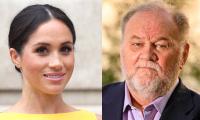ISLAMABAD: The PTI government on Thursday approved the re-basing of national accounts, resulting in jacking up of GDP growth rate from provisional 3.94 percent to 5.57 percent for the last fiscal year 2020-21.
However, this exercise has led the total debt and liabilities in the percentage of GDP ratio improving by 14 percent but the tax to GDP ratio declining. With the approval of re-basing of national accounts from 2005-6 to 2015-16, Pakistan’s social sector spending on education and health in the percentage of GDP worsened, so Islamabad would have to work hard to convince the international community for complying to increase spending on the neglected social sector.
The country’s investment and savings in the percentage of GDP also slashed. However, the government preferred to release re-basing of National Accounts figures and update the whole series of macroeconomic figures without getting approval from the Governing Council of Pakistan Bureau of Statistics (PBS).
The re-basing of the economy would make both PTI-led government and PML-N happy as the GDP growth figure during their tenures. On the basis of re-basing of economy, the GDP growth figure went up under PML-N-led regime in 2017-18 from 5.78 percent to 6.1 percent GDP growth.
Under the PTI-led regime, the GDP growth figure increased from 3.94 percent to 5.3 percent in 2020-21 on the basis of the base year 2005-6 but it went up to 5.57 percent in accordance with the change of base year in 2015-16.
The re-basing of the national economy from 2005-6 to 2015-16 increased the size of the economy from Rs48 trillion to Rs55.5 trillion. The size of the economy in the dollar term jacked up from $298 billion to $347 billion in 2020-21. The per capita income in dollar terms increased from $1,666. However, the size of the economy under PTI-led regime was still lower than the PMLN-led regime when it stood at $357 billion in 2017-18.
Now with re-basing done after 10 years, the debt to GDP ratio improved significantly as total debt and liabilities stood at 100.3 percent of GDP on the basis of the base year 2005-6 but now it declined by 14 percent and stood at 86.2 percent in 2020-21. The tax to GDP ratio declined from 9.6 percent to 8.6 percent of GDP.
The spending on education in percentage of GDP declined from 2 percent and health spending slashed down from 1 to 0.5 percent of GDP. The revised share in GDP in 2020-21 for the agriculture, industrial, and services sector stands at 24 percent, 19.5 percent, and 56.6 percent against 23 percent, 20.9 percent, and 56 percent for the base year 2015-16.
The current account deficit and the budget deficit will also show an improvement because the overall size of the economy in both dollar and rupee terms increased. The re-basing of economy replaced base year after 10 years from the fiscal year 2005-6 to 2015-16. The Pakistan Bureau of Statistics (PBS) conducted surveys of different sectors for the purpose of capturing economic activities and the World Bank (WB) also validated this exercise.
“Yes, we conducted over 46 surveys to capture real economic activities as the private sector education survey was done separately, showing improvement by close to 50 percent. We also conducted a separate survey related to private TV channels and cable/internet services,” Chief Statistician Pakistan Bureau of Statistics (PBS) Dr Naeem Ul Zafar said when The News contacted him for comments on Thursday.
However, the PBS could not conduct a livestock census in this re-basing exercise. The government also decided to include a petroleum development levy (PDL) as part of indirect taxes in new re-basing.
When asked why the GDP growth for the last fiscal year 2020-21 jumped up from 3.94 percent to 5.3 percent on the basis of 2005-6, the official sources said that the Large Scale Manufacturing achieved over 15 percent growth and wheat production increased from 27.3 million tons to 27.5 percent, so its production increased by 0.2 million.
The electricity sector growth turned negative in accordance with a provisional date to plus growth, so all these sectors contributed to achieving the GDP growth of 5.3 percent for 2020-21. There might be a slight change in GDP growth when it would be finalised in May 2021-22. The PBS accomplished the re-basing exercise on the basis of 60 to 70 percent available data for 2021-22.
Now the size of the economy is $347 billion for last fiscal 2020-21 from earlier provisional estimates of $298 billion. The re-basing of national accounts was done in 1980-81, then in 2000 and 2005-6 and now in 2015-16. The exercise done in 2005-6 got implemented in 2007-8. Now the base year of 2015-16 got implemented in 2021-22.
When contacted, renowned economist Dr Ashfaque Hassan Khan said that it was a routine exercise aimed at capturing new sectors of the economy fully. He said that he had asked Prime Minister Imran Khan in Macroeconomic Group meeting to release re-basing of national accounts because he knew that the exercise was accomplished and it should be released.















